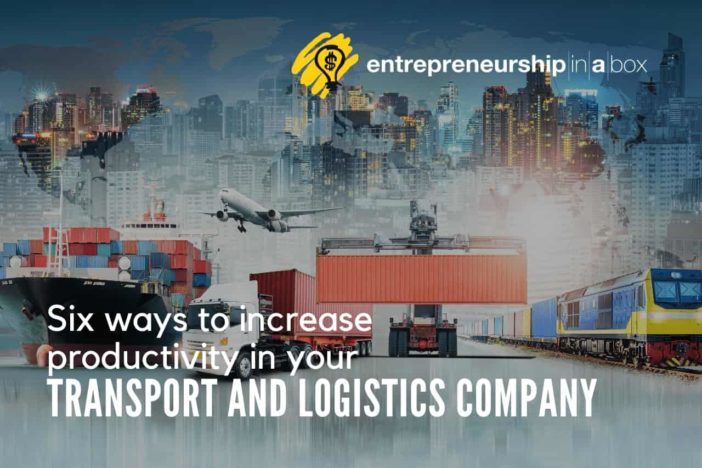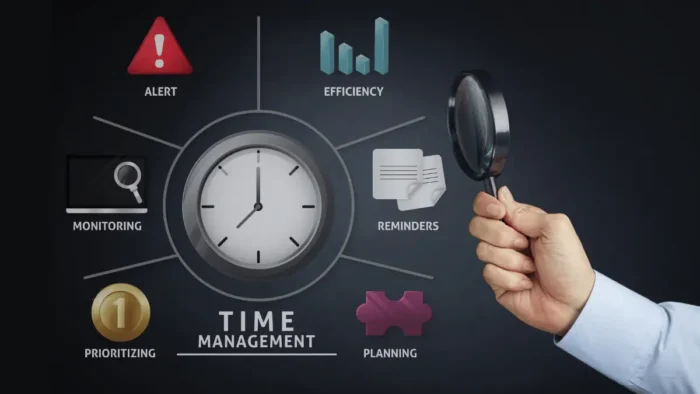The logistics and transport industry serves as a critical part of any country’s economy. From something as small as a food delivery business to a large-scale department store like Walmart, every company today depends on the transport and logistics industry’s efficiency and productivity.
Simply put, it’s hard to imagine a world without logistics and transport businesses transferring goods from one place to another. This is why the productivity and efficiency of this sector are crucial to the overall economy.
Additionally, like every other sector, it’s a highly competitive market since companies today are neck-to-neck on how quickly they can deliver goods. The global logistics industry is currently valued at 5.5 trillion euros, and this value is only expected to grow further.
It’s imperative for logistics businesses today to keep up with industry demands and continuously implement strategies to boost their overall productivity and efficiency. If you’re the owner of a logistics business and are wondering how you can achieve that, here’s what you need to do:
Invest in the latest equipment
Undoubtedly, the success of a logistics business significantly depends on its vehicle fleet. It affects the quality and competence of your services and can directly impact your success and growth. The latest technologies and state-of-the-art equipment can give you a competitive edge and ease the service mechanism.
Of course, these commercial vehicles don’t come cheap, and you might need to go through an extensive loan application process. In this case, you can opt for truck financing, which can help you obtain the vehicles you need quicker.
These alternative lenders can provide you with a lease or a loan where the new or used equipment itself services as collateral. These rates and terms may even be lower than traditional loans and depend on various factors, such as the vehicle’s value, age, your credit history, and the business’s current financial state.
Automate your business processes
If your business processes aren’t currently automated, then you’re missing out significantly. As mentioned, the transport and logistics industry is heavily dependent on fast turnaround times and quick services; however, you’d be surprised how many business owners tend to forget these critical factors.
It’s important to realize that several processes occur before a vehicle is in transit. Many businesses perform these processes manually, which takes up a lot of time and can lead to errors. Using software to improve your operational efficiency can help in multiple areas, such as dispatch processing and order retrieval.
Consider wearable technology
Communication is crucial in logistics, and a lack of an efficient system can result in disrupted supply chains and issues sourcing raw materials. It’s essential to ensure your business is as flexible and agile as possible by streamlining communication and encouraging collaboration.
While wearable technology is typically associated with fitness, you’d be surprised how you can use such devices in your logistics business. These devices are connected to the internet and increase communication between users.
Wearable technology can significantly boost your supply chain and warehouse productivity. Additionally, it can also help monitor your employees’ stress levels and overall health, and you can keep track of their location through the GPS, too.
Invest in drones

One technology that can improve your operations is drones. Drones were previously used in the military and defense sector but have now flown their way into the logistics industry since they can help transport goods by air and save your distribution costs.
However, you may find it challenging to invest in this technology due to its high costs. It also has a limited carrying capacity, which may not be feasible if you have to transport large volumes. Lastly, air traffic routes are currently not adapted or defined for drones, making this a relatively new area.
Apart from these limitations, though, drones are definitely worth considering since they may potentially define the logistics industry’s future. There’s no doubt that they can help make your operations more manageable and reduce your costs and carbon footprint in the long run.
Optimize your transport network
Route optimization can help your business determine the best routes for your delivery drivers. This doesn’t necessarily mean you need to find the shortest routes; the key is to minimize the total driving time when making any stops. It depends on multiple variables, including:
- Driver schedule
- Traffic congestion
- Delivery time windows
- Hub location and/or driver proximity
- Distance between the stops
- Vehicle load capacity (volume and/or weight)
- Road accidents
It’s essential to automate the route optimization process since doing it manually can make it time-consuming and tedious. The software can help you calculate the best routes in seconds, boosting your overall efficiency as you increase the total deliveries your drivers make and your business’s revenue potential.
Set up an efficient back office
While your fleet is vital to your logistics business, all your efforts can go to waste without an excellent back office. This back office manages everything by maintaining smooth operations and guaranteeing customer satisfaction.
To achieve this, you need a competent supply chain manager, team and a system that integrates your different departments, such as HR, finance, supply chain, and marketing. This ERP system manages the various aspects of your business and provides valuable insights that can help you grow.
Final Thoughts
Running an efficient logistics business isn’t easy in this highly competitive world, but focusing on the right areas and implementing strategies to boost productivity can definitely help. By focusing on the aspects above, you can cleverly react to market competition.



